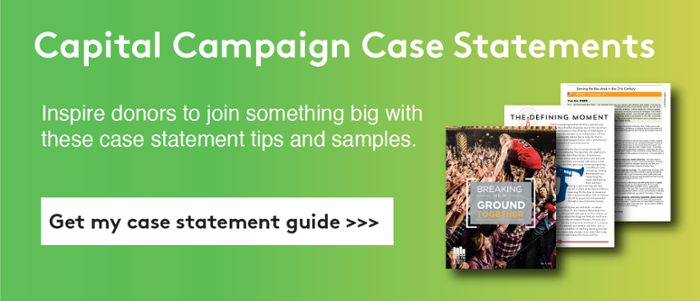Related Articles
Subscribe to the Greater Public newsletter to stay updated.
This site is protected by reCAPTCHA and the Google Privacy Policy and Terms of Service apply.

One of the most visible work products of a capital campaign is the campaign case statement. This cornerstone – and, ideally, captivating – document illustrates the need your campaign is addressing, why it is urgent to address it now, and persuades the reader that they are key to making transformational change. It is a chance to demonstrate why your station is in a unique position to do amazing things. The most fabulous case statements are concise, urgent, and inspiring.
Your case statement should be unique to your organization and to the project that you are raising money to create. There is not a one-size-fits-all approach, but you must create a document that will clearly communicate to your prospective donors:
1. The problem facing your community
2. What your project is and how it solves the problem
3. Why they should be a part of the solution
[Continued below…]

You may find that it works best to have a document that can be customized for each prospect or one document presented to all. But the case should be singularly focused on inspiring a donor to make a commitment to your campaign. Resist the temptation to create a case for an internal audience. Avoid laying out plans in extreme detail or going too in-depth on fundraising expenses of the campaign. Keep the focus on what the need is that you’re trying to address and on those whom your organization serves. If a specific donor has detailed questions you can always follow up with additional materials or resources for them to consider.
Once you have gathered as many of the materials listed on the checklist as possible, read through everything carefully and take notes on what themes and keywords reappear. Are there concerns from board members that seem particularly relevant? Is there an element of the campaign plan that seems too vague? Which part of the project does everyone seems equally excited about? What images or colors seem to resonate strongly with this campaign’s projects and aspirations? Keep these notes handy as you begin the outline for your case statement.
Next you’ll need to answer some of the bigger questions about the campaign. This will help you form the basis of the text for the case statement. Make sure you get input from a variety of sources within your station so you have the most complete picture as you begin.
1. What is the dream the campaign is intended to realize?
2. What makes this moment absolutely necessary for this campaign? Necessary for whom?
3. What are the long-term goals of the station and how does the campaign fit into them?
4. What are the projects/funds that make up the campaign?
5. What is the definition of success for each project/part of the campaign?
6. How does a successful campaign change your station? How does a successful campaign change your key stakeholders (listeners/viewers, community, neighbors, campaign donors)?
7. What risks is the station willing to take in order to make this dream a reality?


New to Greater Public? Create an account.